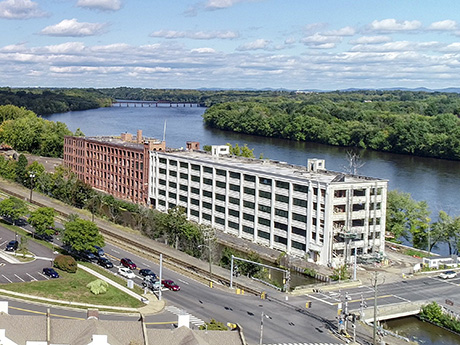Frustrated by high costs and a lending crunch for market-rate multifamily projects, savvy mainstream developers are seeking opportunities to build affordable housing. But what constitutes opportunity in a sector reliant on agency lending, community stakeholders and controlled rents?
Definitions of “opportunity” in affordable housing vary widely, and favorable elements often involve additional and unique challenges. Not only must developers identify opportune site conditions, but they must also evaluate prospects to compete for funding, secure municipal approvals and win community support. And they need to complete the project within required timeframes in order for the asset to qualify as a good opportunity.

Hanfield Curtin,
Beacon Communities
REBusiness asked experts from two firms at the forefront of affordable housing development about what affordable housing “opportunity” looks like — and about the strategies they use to transform promising sites into viable projects. Beacon Communities is an established developer of affordable, market-rate and mixed-income housing, while Bohler’s land development consulting and site design services have helped clients identify and act on commercial real estate opportunities for more than 35 years.
“We look at any development opportunity through three lenses,” says LeAnn Hanfield Curtin, vice president of development at Beacon. “Those are the availability of sites, ability to get necessary zoning and how well the project aligns with state policy goals.”
Strategizing Opportunity
Many site selection principles for affordable development mirror those for mainstream multifamily housing.
Urban areas offer stronger opportunities for affordable housing residents due to easier access to public transportation, jobs and community services that can help residents thrive. Infill acquisition pricing can be high, but these sites often come with area services and utility connections that can eliminate some cost. Developers may need to demolish existing structures, provide offsite improvements or incur other expenses to suit community leaders.
Suburban development can mean lower acquisition pricing and building sites free of preexisting structures. Residents may gain access to valued school districts and exciting area amenities. However, suburban lots may lack infrastructure, increasing the developer’s cost to provide utilities and street connections. Limited public transportation may pose a challenge for residents.

Beacon Communities
With careful planning, a versatile developer can achieve success in a range of neighborhood settings, says Emily Bouton, Beacon’s senior development director. “We’ve built successful affordable housing projects in the suburbs, in the heart of the city and everywhere in between,” she says. “The more you prepare and get ahead of all those obstacles, the easier it is in the long run.”
Zoning scenarios that represent the greatest opportunity will vary by deal and by market, but affordable housing developers who are in the know usually follow the lead of the state agencies that allocate project funding to maximize tax and building incentives, Hanfield Curtin says.

Bohler DC
- Opportunity Zones. Many states designate Opportunity Zones for affordable housing. In these areas, eligible investments may receive tax breaks to boost the project’s bottom line and may improve an applicant’s ability to qualify for funds.
“A lot of states further define the areas where they want to prioritize affordable housing, and it can become a gating issue,” Hanfield Curtin explains. “Developers compete against other projects for affordable housing funding. If a particular state defines the suburbs or an Opportunity Zone as needing affordable housing, then finding a site in those areas helps your project to compete.”
- Inclusionary Zoning. “Inclusionary Zones enable community leaders to make zoning conditional on providing agreed-upon levels of affordable units. However, keep in mind that each project can have different requirements. In exchange for meeting conditions and depending on the jurisdiction, developers can receive incentives to offset costs. These incentives can include expedited permitting, fee reductions, grants, lowered land costs, variances and more,” says Sara Link, a senior project manager at Bohler DC.
The District of Columbia, for example, establishes Inclusionary Zoning to ensure new multifamily properties reserve apartments for rent to residents at various income levels below the area median income, Link says.
Aligning Funding Opportunities with Community Needs
Securing funding for affordable housing projects is a challenging, merit-based process, influenced by scoring criteria set by funding agencies. “Funding for affordable housing is competitive. It’s not a guarantee; it’s not a given. The question is: how do you get your project at the front of the line?” says Hanfield Curtin.
The alignment of funding opportunities with the specific state or municipality’s priorities is critical for a project to be considered. Factors such as urban or suburban locations and opportunity zones can impact a project’s competitiveness, though they are not the only considerations.

Bohler
Community engagement is vital; developers must reach out to local organizations and residents to gather feedback and incorporate their needs into the development plans. This process, while time-consuming, is often required by local governments, key to obtaining funding and is essential for gaining community support and obtaining necessary approvals. In many cases, local governments require developers to “engage with the community and consider local needs and wants. We need to find out what would be of use to stakeholders in the area so that our communities incorporate those important aspects and can secure funds,” explains Erin Gogolin, a project manager at Bohler’s Pittsburgh office.
Educating the community about the diverse needs served by affordable housing can help build widespread approval. “Generally speaking, people who don’t work in affordable housing don’t realize that ‘affordable’ housing encompasses a wide variety of needs and incomes, especially in high-cost markets where the area median income is also high. Everybody knows and loves someone who would qualify to live in the developments that we are proposing. I think making that reality clear makes the housing easier to explain and more relatable for the community,” says Bouton.
“When it comes to timing, we usually start with leadership in the municipality before going to individual groups. We want to start at the top and see what the community’s appetite is for what we’re proposing,” explains Bouton.
Preparation Streamlines the Process
“Development is harder now than it has ever been, for market-rate deals and for affordable housing,” says Beacon’s Hanfield Curtin. “It’s an ongoing challenge to make these deals work.” Preparation and getting ahead of potential obstacles in the development process often falls to the engineering team and represents a procedural opportunity to control overall project cost.
According to Link, the work Bohler provides to clients near the start of a project has a great impact on how smoothly the development progresses.
“When we study feasibility, we think of it like a high-level risk analysis of what the developer could or couldn’t do with a site,” Link says. For example, sometimes sites will require too much additional offsite infrastructure, or the environmental concerns such as soil, stormwater requirements and floodplain are too costly to pencil out for an affordable project.
Anything that avoids conflict and delay is an opportunity to help the developer succeed, observes Gogolin. That’s why Bohler creates project timelines that keep clients on track to meet a project’s goals, coordinating everything from municipal hearings to construction milestones. If a project will require a zoning change, for example, the team allows time for staff review periods, public hearings and related dates, adjusting project schedules when necessary.
“With affordable housing, developers have to do a lot of extra tasks like submissions for funding,” Gogolin says. “We incorporate all that in a timeline. It helps keep expectations realistic.”
And affordable housing developers need realistic expectations, particularly as they search for opportunities in today’s market. The most prevalent opportunities demand careful planning, discernment and hard work to produce an operational affordable housing property.
— By Matt Hudgins. Bohler is a content partner of REBusinessOnline. For more articles from and news about Bohler, click here.


